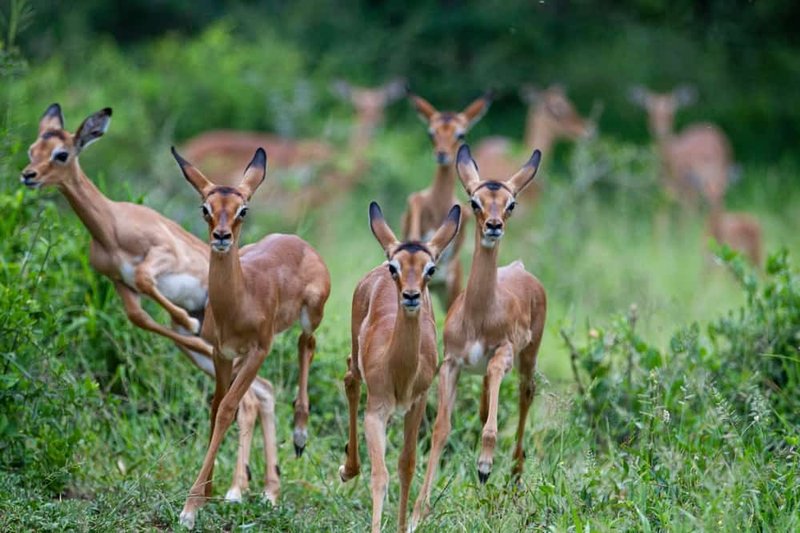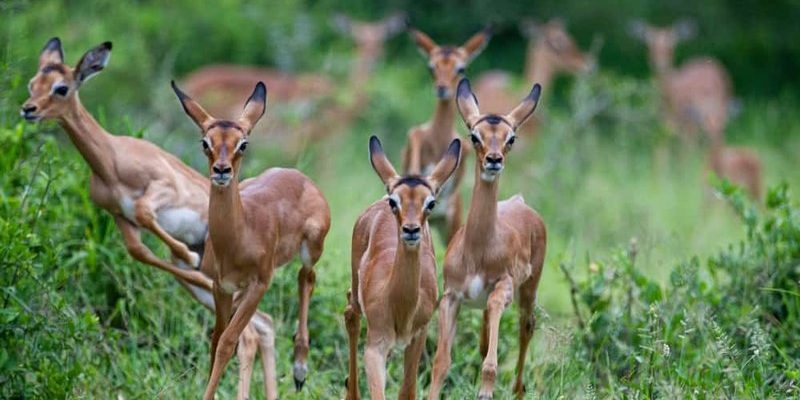
It’s like going to a gallery of wildlife; each species has its own style and story. Some may be just as swift and sleek, while others might boast different colors or behaviors. Understanding these animals not only enriches your knowledge but also deepens your appreciation for nature’s diversity. So, grab your favorite beverage, sit back, and let’s dive into this fascinating topic together!
1. Antelope
When you think of animals that resemble gazelles, antelope probably springs to mind first. There are several species of antelope, and they share many characteristics with gazelles, including body shape and habitat. Most antelope are found in Africa and parts of Asia, thriving in grasslands and open woodlands. They have a similar build—slender bodies, long legs, and a graceful demeanor.
What sets antelope apart from gazelles? While gazelles are often known for their incredible speed and agility, most antelopes are more robust and stocky. For instance, the elk or moose might not do the same elegant bounding that a gazelle does, but they certainly hold their own in strength. Gazelles also have distinct horns and markings that can help you spot them among the crowd of other antelopes.
2. Springbok
The springbok is another close relative to the gazelle. You’ll find them primarily in southern Africa, notably in places like Namibia and South Africa. They are medium-sized and have similar coloration—often tan or light brown with white patches. One distinctive feature of springboks is their ability to perform an impressive leap known as “pronking”, where they leap high into the air, showcasing their agility.
But how can you tell a springbok apart from a gazelle? The springbok has a more pronounced white stripe running down its side, and their horns curve in a unique way. While gazelles tend to be more compact and graceful, springboks exhibit a slight bulkiness in their body shape. Also, keep an eye on their behavior; the pronking leap is a show-off move, while gazelles are usually more understated.
3. Impala
Next up is the impala, a true beauty of the African plains. These animals are often seen in large herds, making them a common sight on safaris. Similar in appearance to gazelles, impalas have slender bodies and long legs, but their coats are typically a bit darker, with a rich reddish-brown hue.
The main distinguishing factor? Impalas are known for their incredible jumping ability and can leap up to 10 feet in the air! They are also more social than typical gazelles, often forming large groups that graze together. In comparison, gazelles tend to be more solitary or found in small family units, which can make observing them a different experience altogether.
4. Saiga Antelope
The saiga antelope is a fascinating example of an animal that resembles gazelles but has noticeably different features. With its large, distinctive nose and bulging eyes, it’s hard to miss! This antelope is native to the grasslands of Central Asia, where it uses its unique nose to filter out dust and regulate temperature.
What sets the saiga apart from gazelles? First off, their appearance is quite eccentric! Unlike the sleek bodies of gazelles, saigas have a more rounded shape and an unusual bulbous nose. Additionally, they tend to occupy a different ecological niche, often found in more arid environments compared to the lush grasslands gazelles prefer.
5. Thompson’s Gazelle
You can’t talk about gazelles without mentioning the Thompson’s gazelle, often referred to as “Thompson’s.” They’re smaller and more compact compared to other gazelle species, making them a bit cuter, in my opinion! You’ll find them roaming the plains of East Africa, notably in places like the Serengeti.
To identify a Thompson’s gazelle, check out their *black stripe* that runs down the side of their body. This is a feature not often found in other gazelle species. They also tend to have a more playful demeanor, often engaging in quick sprints and playful bounds. A little harder to catch sight of than their larger relatives, they’re a joy to observe when you can find them.
6. Nubian Ibex
The Nubian ibex is another animal that may come to mind when thinking of gazelle-like creatures. These goats inhabit the rocky mountains of the Middle East and are known for their impressive, curved horns that can grow quite large. Unlike gazelles, Nubian ibexes have a stockier build and are adapted for climbing steep terrains.
So, how do you differentiate them from gazelles? While gazelles are known for their speed and grace across flat grounds, Nubian ibexes are more robust and agile in rugged landscapes. Their coat is also thicker and often features a light tan color, allowing them to blend into their rocky environment, which is quite different from the gazelle’s more uniform coloring.
7. Tahr
The tahr is a large mountain goat that could easily be mistaken for a gazelle if you squint. They have a sturdy build and shaggy fur, primarily found in the mountainous regions of Nepal, India, and Bhutan. Though they share the same habitat as some gazelles, their adapted physique tells a different story.
What’s the difference? One key feature is their wild mane that flows around their necks. While gazelles have sleek fur and elegant shapes, tahrs are rugged, with a more built look. They are skilled climbers and tend to navigate rocky environments rather than open plains, which makes their lifestyles drastically different.
8. Kudu
The kudu is another great example of a gazelle counterpart. This animal is remarkable for its spiral horns and huge ears, making it stand out in the savannah. You’ll see them mostly in eastern and southern Africa. They have a visually stunning greyish-brown coat with white stripes that create a striking pattern.
Kudus are larger than gazelles and have a more robust body that can weigh up to 600 pounds. Their unique markings and distinctive horns are easy identifiers. While gazelles are fleet-footed sprinters, kudus are more about agility in tight spaces and often rely on their keen senses to evade predators in dense brush.
9. Gerenuk
The gerenuk, or “giraffe gazelle,” is another fascinating species that resembles the gazelle. With its long neck and slender body, it looks quite different but still shares a family connection. Found in East Africa, these animals are well-adapted for reaching high branches, often standing on their hind legs to browse foliage.
What makes them unique? Gerenuks have a more elongated neck and body compared to typical gazelles. Their behavior also sets them apart; they are more solitary and can often be seen foraging alone or in pairs. This differs from gazelles, which tend to herd together for safety.
10. Waterbuck
Finally, the waterbuck rounds out our list. While they may not look like gazelles at first glance, they share habitats and some similarities in behavior. Found near rivers and lakes across Africa, waterbucks are known for their larger, more robust build, and distinctive ring around their rear ends.
To spot a waterbuck, look for their shaggy coat that’s often dark brown or grey. Unlike gazelles that tend to be lighter in color, waterbucks have a thick mane and bulkier body. Their lifestyle is also different, as they often thrive near water sources and are less likely to be found sprinting across open fields like a gazelle.
Exploring the world of animals similar to the gazelle is like walking through a nature-inspired art gallery—fascinating and diverse. Each species offers something unique, from the graceful springbok to the quirky saiga antelope. Understanding these differences enriches our appreciation for nature and helps us recognize just how interconnected all these creatures are.
Next time you’re out in the wild or watching a documentary, see if you can spot these animals and appreciate their unique traits. Nature has a wonderful way of presenting us with a variety of astonishing life forms, and gazelles are just one beautiful piece of the puzzle!

